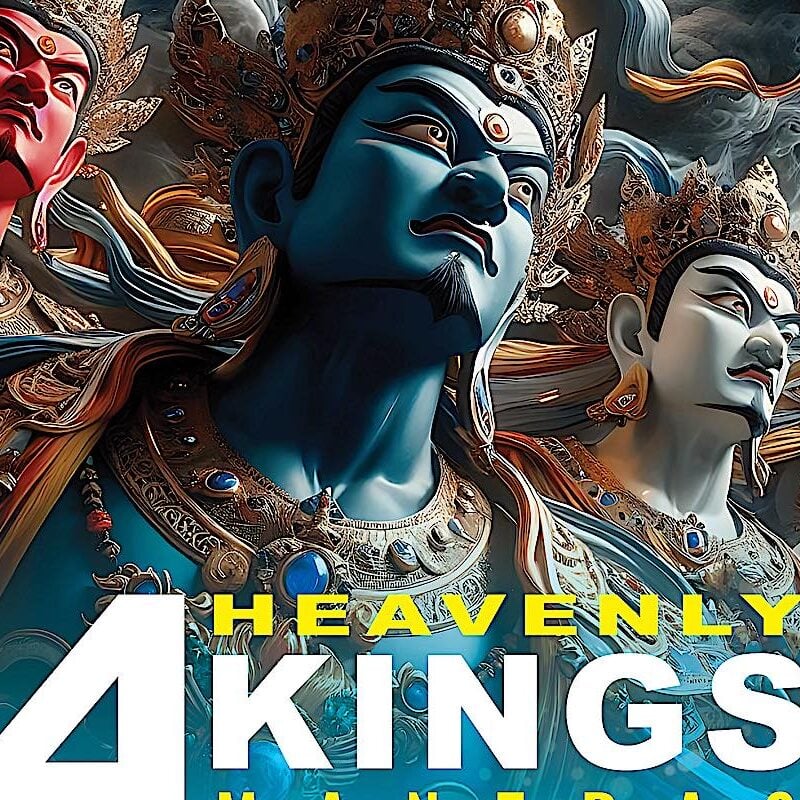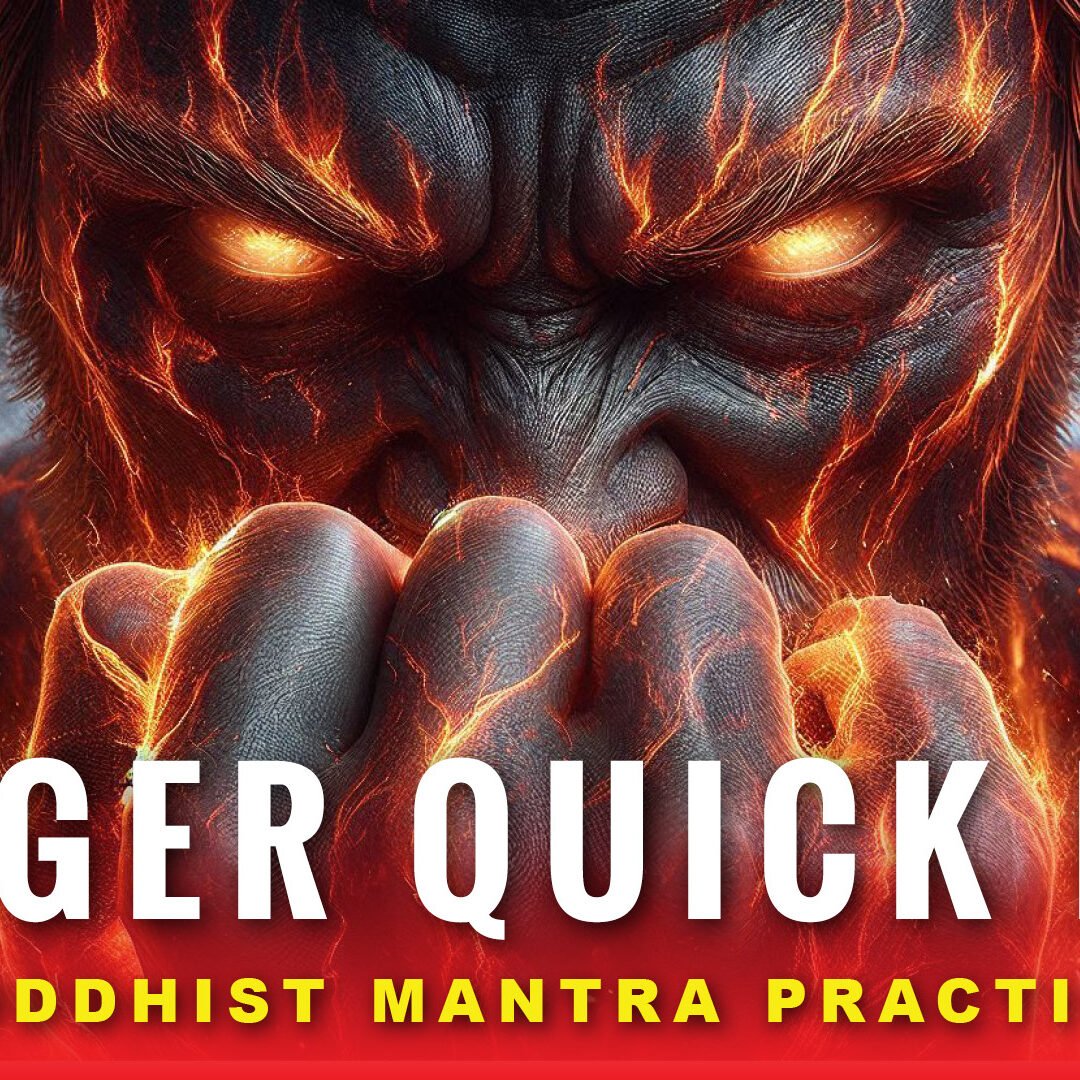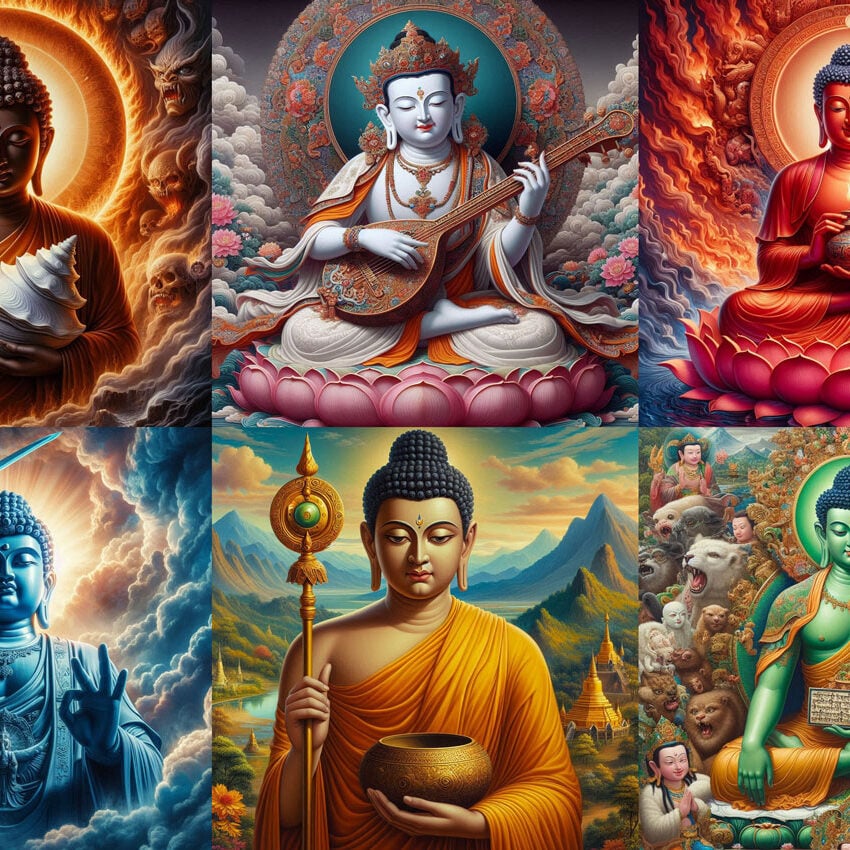Six White Tara Mantras for Pacifying: Chant along with Buddha Weekly’s new White Tara Collection Album!

Mother Tara, as the Enlightened Activity of all the Buddhas, manifests in countless forms. The best known of these are the 21 Taras, celebrated in a Dharani Sanskrit Praise and teaching, in Sutra and also in Mantras.
Among the 21 in the Atisha lineage of teachings, there are six White Taras. (For the mantras see below for text.)
White Tara’s pacify. They pacify illness, the five poisons, external dangers, warfare and more. Each of these six White Taras has a specialty and her own mantra. These are called “supplicating mantras” as instructed by the great Longchenpa. The “ask” for and request Tara’s pacifying activity to suppress disease, violence, anger, and so on. (See our short description of each below.)
Buddha Weekly created a beautiful collection of six mantras, each time reciting 108 times, in our new Album called “White Tara Mantra Collection.” You can play here, or on your favorite streaming service (mantra text below):
MUSIC RELEASE
- On Youtube>>
- On Spotify>>
- Or search your favoite Streamer: Apple Music, iTunes, Instagram/Facebook, TikTok & other ByteDance stores, YouTube Music, Amazon, Pandora, Deezer, Tidal, iHeartRadio, Claro Música, Saavn, Boomplay, Anghami, NetEase, Tencent, Qobuz, Joox, Kuack Media, Adaptr, Flo, MediaNet
We, as aspiring Bodhisattvas, call on Tara’s help as well, sometimes for more mundane things. The practice of 21 Taras is there to help us with her four types of activity, removing our obstacles to life and practice
These 21 Taras, each have a name, a color, a praise and a mantra. They appear as White, Yellow, Red, and Blue Black. Green Tara combines all of these colors and activities.
White Taras are for Pacifying activities, as she performed for Shakyamuni Buddha, pacifying the demons that assaulted him under the Bodhi Tree. Yellow Taras are for Enriching and Growing. Red Taras are for Magnetizing and Enchanting. Black or Blue Tara is for Wrathful Activity.
In this video, we work with the White Pacifying Taras. In the Atisha lineage of 21 Taras there are six White Taras. In The Nyingma Terma lineage there are usually five.
Here, we present the powerful mantras as transmitted by Lord Atisha.
These are, in the order presented
The Second Tara of the twenty-one, known as Lady of Supreme Peace, pacifies all diseases.
The Ninth Tara of the twenty-one, known as Tara Who Protects From All Fears, pacifies all 8 fears and dangers.
The Fifteenth Tara of the twenty-one, known as Tara of Surpreme Peacefulness, pacifies and purifies all negative karma, obstacles, and harm from spirits, evil intentions of others, and illness.
The Eighteenth Tara of the twenty-one, known as Tara Who Neutralizes Poison, eliminates not only physical poisons but the internal poisons of anger, hate and attachment.
The Nineteenth Tara of the twenty-one, known as Sitatapatra, Tara Who Eliminates All Suffering,, pacifies and helps overcome war, strife, arguments, conflict, disputes, bad dreams and all other suffering.
The Twenty-First Tara of the twenty-one, known as Tara Who Completely Perfects All Enlightened Activities is none other than Marichi, and she perfects all pacifying activities and completes all siddhis, common and supreme, including various magical attainments, into the cause for final Enlightenment.
FOR MORE ON WHAT THE MANTRAS MEAN AND HOW TO PRACTICE SEE OUR VIDEO ON SUPPLICATION ACTIVITY MANTRAS: https://www.youtube.com/watch?v=GSTZHJ_hjZY&t
2. Tara of Supreme Peace (Sarasvati)
om tare tuttare ture shatim kuru svaha
ॐतरेतुत्तरेतुरेशतिमकुरुस्वहा
9. Tara Who Protects from All Fears
om tare tuttare ture mama upakrama raksha raksha svaha
ॐतरेतुत्तरेतुरेममउपक्रमारक्षारक्षास्वहा
15. Tara of Supreme Peacefulness
om tare tuttare ture sarva papam prashamanaya svaha
ॐतरेतुत्तरेतुरेसर्वपपमप्रशमनयस्वहा
18. Tara Who Neutralizes Poison
om tare tuttare ture naga visha shantim kuru svaha
ॐतरेतुत्तरेतुरेनगाविशशन्तिमकुरुस्वहा
19. Tara Who Alleviates All Suffering (Sitatapatra)
om tare tuttare ture mochana svaha (pronounced mochana with a soft ch )
ॐ तरे तुत्तरे तुरे मोचन स्वहा
21. Tara Who Completely Perfects All Enlightened Activities (Marici)
om tare tuttare ture sarva siddhi sadhanam svaha
ॐ तरे तुत्तरे तुरे सर्व सिद्धी सधनम स्वहा
ART CREDITS:
Lasha Mutual: https://lashamutual.com/
Terma Tree: https://etsy.me/3OZkkB2
Vajrayana Print: https://etsy.me/42W9TDU
#Tara #buddhistmantra #Taramantras #taramantra #21Taras
More articles by this author

Windhorse Tara Practice: Tara, the Wind of Life; Tara, Goddess of Wind, Buddha of Activity, Karma Mother

NEW MUSIC ALBUM! Four Heavenly Kings: Mantras Chanted in Sanskrit for Good Fortune, Protection, Harmony and Wisdom

4 Guardians of the World and Dharma: the Watchers of the World: the Four Heavenly Kings in Buddhism, Their Mantras and Practice
Search
Latest Features
Please support the "Spread the Dharma" mission as one of our heroic Dharma Supporting Members, or with a one-time donation.
Please Help Support the “Spread the Dharma” Mission!

Be a part of the noble mission as a supporting member or a patron, or a volunteer contributor of content.
The power of Dharma to help sentient beings, in part, lies in ensuring access to Buddha’s precious Dharma — the mission of Buddha Weekly. We can’t do it without you!
A non-profit association since 2007, Buddha Weekly published many feature articles, videos, and, podcasts. Please consider supporting the mission to preserve and “Spread the Dharma." Your support as either a patron or a supporting member helps defray the high costs of producing quality Dharma content. Thank you! Learn more here, or become one of our super karma heroes on Patreon.
Lee Kane
Author | Buddha Weekly
Lee Kane is the editor of Buddha Weekly, since 2007. His main focuses as a writer are mindfulness techniques, meditation, Dharma and Sutra commentaries, Buddhist practices, international perspectives and traditions, Vajrayana, Mahayana, Zen. He also covers various events.
Lee also contributes as a writer to various other online magazines and blogs.















